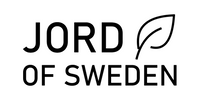Care advice for linen garments, beddings and towels
These care and washing instructions are suitable for all types of linen products such as garments, towels, duvets, pillowcases and linen tablecloths. If you follow our washing recommendations, you will significantly extend the life of the products.
How to wash linen fabrics?
- We recommend turning all products inside out and buttoning any buttons
- Wash separately the first few times (linen can shed linen fibers which diminishes over time)
- Preferably use an environmentally friendly detergent such as Almgren's washing soap, which you can find in our store. Do not use particle based detergent as they will ruin your linen fabrics, instead use a liquid detergent.
- Avoid fabric softener and bleach
- Linen can withstand high temperatures during washing. However, in order to preserve the products as long as possible, and for environmental reasons, we recommend washing in temperatures as low as possible (40-60 degrees). Please note that dyed linen can lose color over time if washed at temperatures above 40 degrees
- Linen is a natural material that is self-cleaning. This means that you can let your products air out and thus wash them more seldom. For an extra refreshing feeling, we recommend that you spray on linen water, which also makes the products a bit smoother.
Flax consists of fiber bundles, where the individual fibers look like small tubes. When the line gets wet, these tubes swell. Solid materials from the detergent can now be rinsed into these. When the linen then dries and the fibers thereby shrink, the solid material is locked in. Through each wash, new particles enter the fibers. As it dries, the fibers shrink and the voids narrow again. As the trapped particles do not shrink, they burst the pipes. The fabric then becomes brittle and eventually dissolves.
How to dry linen fabrics?
- Stretch the products and the fabric at the edges and hang them to dry
- Feel free to hang the clothes on a hanger to dry
- Your products may feel a little stiff after washing and drying, but they will soften as soon as they come into contact with the skin or start being used again. Steam or iron for an instant softer feel.
- Tumbling is possible, but not recommended. It is more energy-intensive and breaks the fibers in the linen fabric. This makes the fabric more wrinkled and prohibits it from regaining a smooth structure. It also shortens the life span of your linen. If you want a softer "tumble-drying" feel, we recommend that you first let it hang dry and then tumble dry for a short period of time.
How to iron linen fabrics?
- Moisten the linen and then let it sink in a little into the fabric. Then iron on linen heat which is often the highest temperature on the iron
- If you want a really smooth and glossy surface, cold mangling is preferable. When you mangle your linen products, you put a lot of pressure on the linen. This in turn brings out the luster in a beautiful way. Moisten and stretch the linen before you start mangling. Mangle the fabric slightly damp and then let it dry. If you want extra shine, you can mangle it once more after the linen has dried. Remember to let the linen rest for at least 1 day before mangling after washing.
- You can also use a steamer on your linen products.
- When ironing and when using a steamer, we highly recommend using linen water, which gives a smoother result and at the same time a fantastic scent.
























